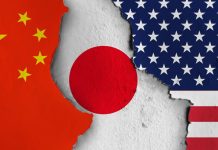By Umber Khairi
-
2023 has been a deadly year for Pakistan in terms of such incidents
-
The attacks are being carried out by groups linked to or supported by Afghanistan
-
Are the measures Pakistan is taking actually relevant to the situation?
Last week’s terrorist attack on a security check post (a police station reportedly being used by the army as a base camp) in Dera Ismail Khan district was one of the deadliest in the renewed surge of terror attacks in the country. 2023 has been a deadly year for Pakistan in terms of such incidents (at least 23 security personnel were killed in last week’s attack) yet the official narrative about this violence remains oddly stilted and uninformative.
Even though there is a sense of déjà vu about the methodology of the attacks, official spokespersons, security analysts and the media, generally, seem reluctant to look at the attacks in the context of the militancy that had gripped Pakistan more than a decade ago and was perhaps at its peak in 2009. That period included terror attacks in urban centres: on the army’s GHQ in Rawalpindi, FIA offices and police training schools in and outside Lahore and a deadly and prolonged attack on Karachi airport to name but a few. But despite that experience, the authorities seem to be responding to the incidents in a very narrow and opaque manner.
The official line is that the attacks are being carried out by groups linked to or supported by Afghanistan. A war of words continues between Islamabad and Kabul: Pakistan blames Afghanistan and the Taleban regime then responds with denials or counter accusations. Anybody who has followed regional news over the past decades knows that both countries have been making mutual accusations of ‘exporting terrorism across the border’ and of ‘harbouring terrorists’ for years and there is, indeed, some substance to the accusations.
But the questions to be asked are: Why now? and How come? The first question is usually answered (officially) by connecting attacks to existence of the Taleban regime in Afghanistan and the second by the insistence that the regime is supporting militant groups which can wreak havoc in Pakistan. But to ignorant people like myself, it is unclear how this chaos would necessarily help the Taleban regime. And it is also unclear how, after having dealt with the earlier militancy, Pakistani forces have been unable to stop the increase in these attacks.
Conspiracy theorists will, of course, find altogether more sinister aspects to all this. They will respond to the Why now? question with the answer that allowing these attacks to happen benefits those now running the country. The reasoning these conspiracy theorists will give is that this allows those in charge to a) show how much they are needed to fight against these terrorist enemies and b) recreate a volatile and murky situation in the north and along the border at a time when elections are due to be held. Such conspiracy theorists will answer the second question (How come?) along the same lines, saying that some degree of collusion is present – either through complicity in similar ops against neighbours or by continuing support for potentially ‘useful’ militants – which is how, for example, militants seem to be able to acquire such large amounts of explosive and huge caches of arms (reportedly 264 pounds of explosives were used in the Daraban attack).
Conspiracy theorists always see elaborate strategies and conspiracies in any and every event but there are valid questions to be asked about what is going on and how it is being handled. Are the measures Pakistan is taking actually relevant to the situation? Did the deportation of thousands of Afghan refugees and immigrants – many of whom had lived and worked here for decades – in any way help to stem the threat of this terrorist violence? Will the ’othering’ and demonisation of the Afghan and the Pashtun in any way help to create provincial, national or regional harmony? And what sort of ground will this lay in terms of electoral activity and the challenges a civilian, political government will have to face.
A group called Tehrik-i-Jihad Pakistan (TJP) claimed responsibility for last week’s attack, this hitherto unknown group is believed to be an affiliate of TTP (Tehreek-i-Taliban Pakistan). The composition of this coalition or franchise structure remains murky and as is generally the case with these violent groups they can be quite international – a sort of Terrorists Without Borders. In videos from the November 3 attack (also in D I Khan) attackers could be heard to be speaking in an Afghan dialect and probably more information on last week’s attackers will be gained soon, but the question is not just who are the puppets but also who are the puppet masters? And also, who are the agent provocateurs?
One dangerous consequence of the way this is all reported and handled is the narrative of demonisation. At a recent social gathering a conversation I had with a former senior government official (FBR) was instructive (and shocking). Two former provincial governors, one military, one civilian, had an animated discussion in which the civilian noted how unclear it was what was actually happening with all these attacks. In this context the former FBR chief commented that this was all happening because ‘people in FATA were behind the violence as they were against the merger with KP and didn’t want to give up their special status.’
I found this jaw droppingly simplistic and quite objectionable. Over the many years my former team at the BBC had covered the militancy, we had spoken often to people in these areas and the young people especially had always said they wanted to be integrated so they could have more opportunities and better access to health, education and jobs. Youth leaders and democratically elected legislators from both North and South Waziristan had also confirmed this. These young people had felt they were always under occupation, either by the terrorists or the army – or both. Their lives had been shattered by the violence of the so-called war against terror and those had fought back against the militants had been subsequently targeted and eliminated along with most of their families.
I later raised these points to the former revenue chief but he was adamant and he exclaimed that ‘these people did not want Pakistan, that the PTM were a very dangerous group and that’s why we were instructed not to talk about them.’ This was bizarre as the PTM media blackout had been deliberate with their being labelled as ‘traitors.’ I mentioned this and suggested that he was perhaps talking of the actions of some old tribal leaders rather than most people in FATA but he refused to listen. He then said ‘they don’t pay taxes and they don’t want to.’ I suggested that many people in urban areas also didn’t pay taxes and that in the FATA case this might have to be an evolutionary process and a culture change. He was very annoyed and told me that I couldn’t possibly understand this because this was an economic matter. A well-known journalist colleague and I both said this was a political matter rather than an economic one but he insisted on seeing everything through a purely FBR lense…
But his words reflected a particular narrative of blame that has been popular within certain institutions for years. They also illustrate a continuing demonisation of certain ethnic groups and regions and this is very worrying considering the high price KP and the former FATA region has had to pay in terms of human lives and security over the past few decades.
This weekend marks 9 years since the brutal terrorist attack on the Army Public School in Peshawar. We should remember that when that happened there were many accusations of the terrorist attacks having been ‘allowed’ to continue.
Hopefully, that is not the case now…






